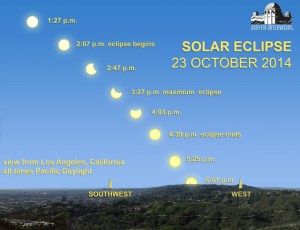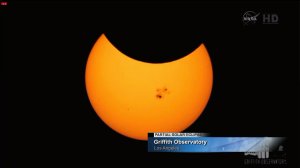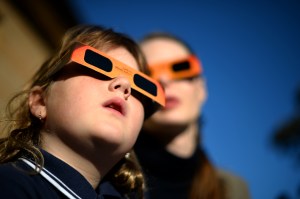Maybe your mother told you it’s not polite to stare.
It’s not safe either, NASA said, advising those looking at Thursday’s partial solar eclipse.

“Don’t stare,” NASA said. “Even at maximum eclipse, a sliver of sun peeking out from behind the Moon can still cause pain and eye damage. Direct viewing should only be attempted with the aid of a safe solar filter.”
The show reached its height at 5:45 p.m. ET, NASA says, meaning the Eastern half of the country got a view before the backdrop of golden twilight hues.
The eclipse began for Southern Californians around 2:07 p.m. PT, with peak viewing just before 3:30 p.m. PT, according to NASA. The spectacle concluded by about 4:40 p.m.
The moon clipped the sun, making it look like a fingernail as sets in the west for most of the country and Canada.

People living in the Central Time Zone were expected to have the best view, NASA said. New England and Hawaii missed out on this one.
Protect your eyes
While enjoying the view, protect your eyes, NASA said.
There are some old tricks to viewing indirectly, like punching a hole in cardboard and projecting the light seeping through it onto a surface away from the sun.

Or let a tree do the work for you, NASA advised.
“Overlapping leaves create a myriad of natural little pinhole cameras, each one casting an image of the crescent-sun onto the ground beneath the canopy,” NASA said.
If you missed this one, the next solar eclipse over North America will occur in about three years — and it will be a more dramatic and rarer total eclipse.





